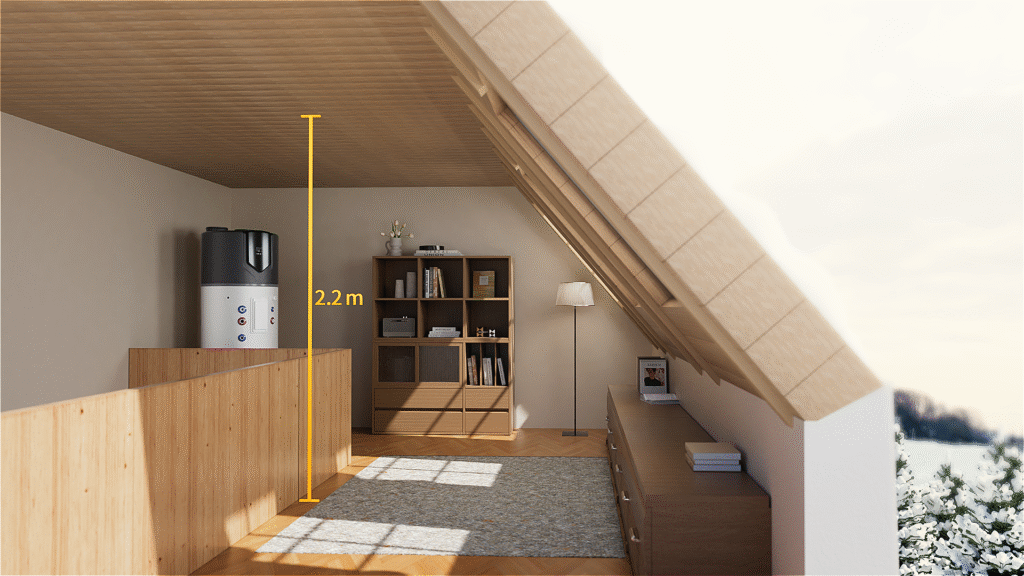As the demand for low-carbon, energy-efficient heating and cooling solutions rises, the global heat pump market is entering a new phase of innovation and growth. Driven by EU decarbonization goals, subsidies, and expanding demand in emerging economies, manufacturers and distributors have heat pump market opportunities to capture market share.
Below are six key heat pump market opportunities for 2025 and beyond, along with customer pain points you can address to stand out from competitors.

1. Photovoltaic + Heat Pump Systems (Hybrid PV Heat Pump)
Why it’s an opportunity
Many EU countries are aggressively promoting self-consumption of renewable energy and low-carbon home systems. The combination of photovoltaics (PV) and heat pumps has become a core solution in achieving net-zero homes.
This hybrid approach allows households to use their solar-generated electricity to power their heat pumps, reducing dependency on the grid and lowering energy bills.
Customer pain points to solve
- Consumers want to reduce electricity bills, but heat pumps can be energy-intensive.
- PV power is generated mainly during the day, yet many systems lack smart control integration to optimize heat pump operation according to solar output.
Market potential
By integrating intelligent load management and thermal storage, suppliers can offer PV + heat pump packages that maximize solar self-consumption and qualify for multiple EU subsidies.
2. Small Space Heat Pumps & Compact All-in-One Units
Why it’s an opportunity
Europe’s older urban areas, especially in cities like Paris, Milan, and Amsterdam, often have limited indoor space. Demand is growing for compact, high-integration heat pump systems that fit in tight spaces without sacrificing performance.
Customer pain points to solve
- No space for separate domestic hot water tanks and buffer tanks indoors.
- Traditional units occupy too much floor space and require complex installation.
Market potential
All-in-one heat pumps—combining heating, hot water, and sometimes cooling—are becoming a go-to solution for apartments, townhouses, and small homes.

3. Multifunctional Trigeneration Systems
Why it’s an opportunity
In Eastern and Southern Europe, both residential and light commercial projects are increasingly turning to one system that serves multiple functions—providing hot water, chilled water, and floor heating from a single unit.
Customer pain points to solve
- Homeowners and developers want to reduce initial investment by buying one system instead of several separate ones.
- Space constraints make separate HVAC and DHW systems impractical.
Market potential
Trigeneration systems offer cost savings, space efficiency, and operational convenience—key selling points in markets with mixed seasonal climate needs.
4. R290 Eco-Friendly Refrigerant Model
Why it’s an opportunity
R290 propane refrigerant is widely recognized as a long-term, eco-friendly alternative to traditional refrigerants. It has ultra-low GWP (Global Warming Potential) and is already a focus of EU green subsidies.
Customer pain points to solve
- Concerns over R290’s flammability and safety.
- Uncertainty about regulatory compliance and installation requirements.
Market potential
By offering safe, certified R290 heat pumps with proven performance, brands can position themselves at the forefront of the green refrigerant transition and secure eligibility for subsidy-driven sales.
5. Multi-Zone Heating & Cooling Heat Pumps
Why it’s an opportunity
Commercial and institutional buildings—such as schools, apartment complexes, and light industrial facilities—increasingly demand multi-terminal, simultaneous heating and cooling solutions.
Customer pain points to solve
- Existing systems cannot provide heating and cooling to different zones simultaneously.
- Retrofitting older buildings is complex and costly without flexible system designs.
Market potential
Heat pumps with hot and cold water circulation interfaces enable building managers to serve multiple zones efficiently, reducing operational costs and improving occupant comfort.
6. Exporting Heat Pumps to Africa, the Middle East, and South America
Why it’s an opportunity
Emerging markets are in the early stages of their energy transition. Countries in Africa, the Middle East, and South America are witnessing rapid growth in government tenders, international aid programs, and NGO-led sustainability projects.
Customer pain points to solve
- Limited availability of trusted local brands.
- Low awareness of heat pump technology and its benefits.
- Need for cost-effective, easy-to-install solutions suitable for varying climates.
Market potential
Manufacturers offering affordable, durable, and easy-to-maintain systems can quickly establish a foothold in these untapped regions.
Conclusion: Seizing the Heat Pump Market Opportunity
From hybrid PV-HP systems in Europe to exporting to emerging markets, these six heat pump market opportunities reflect a fast-evolving industry shaped by space constraints, environmental regulations, and global decarbonization goals.
Heat pump manufacturers and distributors who address specific customer pain points with innovative, compliant, and market-specific solutions will lead in 2025 and beyond.
